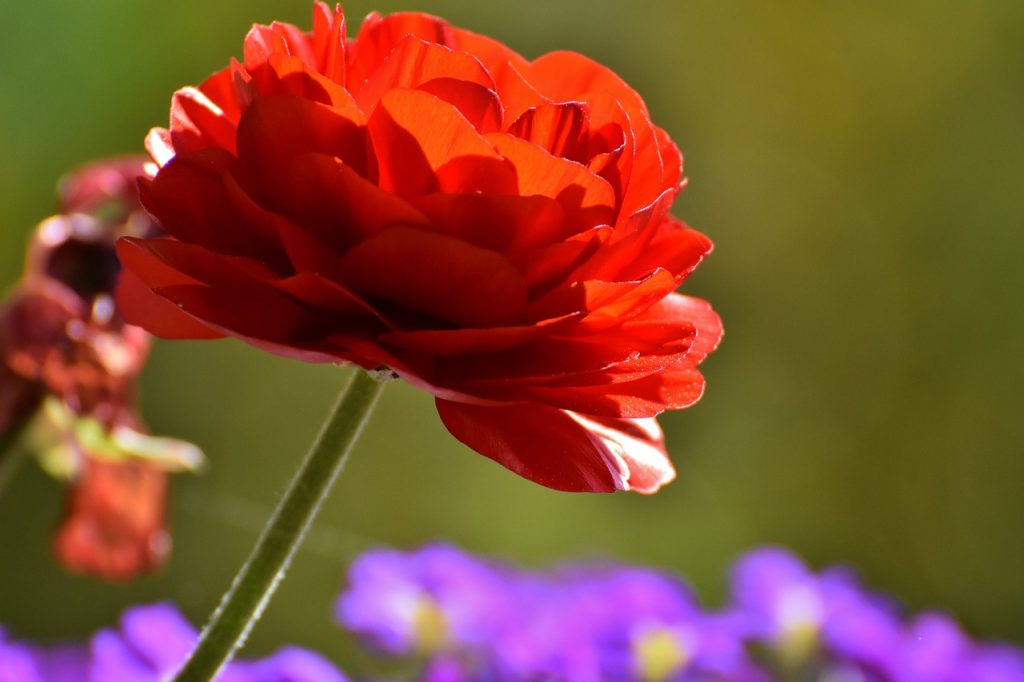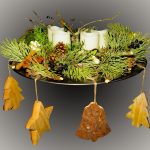Are you ready to add a burst of color to your garden? Look no further than ranunculus tubers! These popular flowering plants are known for their vibrant colors and delicate petals, making them a favorite among gardeners. In this article, we will provide you with step-by-step instructions on how to plant and store ranunculus tubers, ensuring that you can enjoy their beauty year after year.
Planting and storing ranunculus tubers may seem like a daunting task, but with the right guidance, it can be a breeze. Let’s start with the planting process. First, you’ll need to choose the right location in your garden. Ranunculus tubers thrive in full sun, so find a spot that receives at least six hours of sunlight each day. Additionally, make sure the soil is well-draining to prevent waterlogged roots.
Once you’ve found the perfect spot, it’s time to prepare the soil. Ranunculus tubers prefer loose, sandy soil that is rich in organic matter. Before planting, loosen the soil with a garden fork or tiller and remove any weeds or debris. You can also add compost or well-rotted manure to improve the soil’s fertility.
Now, let’s move on to planting the tubers themselves. Dig a hole that is about 2-3 inches deep and place the tuber in the hole with the claws facing down. Space the tubers about 6-8 inches apart to allow for proper root development. Once the tubers are in place, cover them with soil and gently pat it down to remove any air pockets.
Caring for young ranunculus plants is crucial for their growth and blooming. Water the plants regularly, keeping the soil evenly moist but not waterlogged. Fertilize every 4-6 weeks with a balanced, water-soluble fertilizer to provide the necessary nutrients. Keep an eye out for pests and diseases, and take appropriate measures to protect your plants.
When it comes to harvesting and storing ranunculus tubers, timing is key. Wait until the foliage has turned yellow and withered before digging up the tubers. Carefully lift the tubers from the soil, being cautious not to damage them. Clean off any excess soil and allow them to dry in a cool, well-ventilated area for a few days.
To store the tubers over the dormant period, place them in a paper bag or cardboard box filled with dry peat moss or vermiculite. Store them in a cool, dark place with a temperature around 45-55°F (7-13°C). Check on the tubers occasionally to ensure they are not rotting or drying out.
By following these step-by-step instructions, you can successfully plant and store ranunculus tubers, bringing a touch of beauty and elegance to your garden. So why wait? Get started on your ranunculus journey and enjoy the stunning blooms that await you!
Choosing the Right Location
Choosing the right location is crucial for the successful growth and blooming of ranunculus tubers. These beautiful flowering plants thrive in certain conditions, and by selecting the perfect spot in your garden, you can ensure their optimal development.
Ranunculus tubers prefer full sun or partial shade. They need at least 6 hours of direct sunlight each day to thrive. Therefore, when choosing a location, look for an area that receives ample sunlight. However, if you live in a hot climate, providing some shade during the hottest parts of the day can prevent the plants from getting scorched.
In terms of soil, ranunculus tubers require well-draining soil with a pH level between 6.0 and 7.0. Before planting, it’s essential to prepare the soil properly. Start by removing any weeds or debris from the area. Then, loosen the soil using a garden fork or tiller to improve its texture and drainage.
If your soil is heavy and clay-like, consider adding organic matter such as compost or well-rotted manure to improve its structure. This will help create a nutrient-rich environment that promotes healthy growth and blooming.
It’s also important to note that ranunculus tubers are susceptible to rot if the soil is too wet. To prevent this, choose a location with good drainage or consider planting them in raised beds or containers filled with well-draining soil.
By selecting a location with the right amount of sunlight, well-draining soil, and proper pH level, you can provide the ideal growing conditions for ranunculus tubers. This will ensure their successful growth and vibrant blooming, allowing you to enjoy their beauty in your garden.
Preparing the Soil
Preparing the Soil
Before planting ranunculus tubers, it is important to understand the soil requirements for these vibrant flowering plants. Ranunculus tubers thrive in a nutrient-rich and well-draining soil environment, which provides them with the necessary resources for optimal growth and blooming.
To prepare the soil for planting ranunculus tubers, follow these steps:
- 1. Test the soil: Start by testing the soil pH and texture. Ranunculus tubers prefer a slightly acidic to neutral pH range of 6.0 to 7.0. Additionally, the soil should be well-draining to prevent waterlogged conditions that can lead to root rot.
- 2. Amend the soil: If the soil pH is too acidic or alkaline, you can adjust it by adding organic matter such as compost or well-rotted manure. This will help create a more favorable pH level for the tubers. Additionally, incorporating organic matter into the soil improves its structure and fertility.
- 3. Improve drainage: If the soil is heavy and poorly draining, you can improve its drainage by adding coarse sand or perlite. This helps prevent water from pooling around the tubers, reducing the risk of rot and fungal diseases.
- 4. Remove weeds and debris: Clear the planting area of any weeds, rocks, or debris that may hinder the growth of the ranunculus tubers. This ensures that the tubers have ample space and resources to develop their roots and foliage.
By following these soil preparation steps, you can create an ideal growing environment for ranunculus tubers. The nutrient-rich and well-draining soil will provide the necessary support for healthy root development, leading to vibrant blooms and a successful growing season.
Planting the Tubers
When it comes to planting ranunculus tubers, it’s important to follow the proper technique to ensure healthy root development and vibrant blooms. Here are the steps to successfully plant your ranunculus tubers:
Ideal Planting Depth: Ranunculus tubers should be planted about 2-3 inches deep in the soil. This depth allows for proper root development and stability.
Spacing: It’s important to space your ranunculus tubers properly to allow for adequate air circulation and prevent overcrowding. Space the tubers about 4-6 inches apart.
Soil Preparation: Before planting, make sure the soil is well-draining and enriched with organic matter. Ranunculus tubers thrive in loose, fertile soil.
Planting Technique: Dig a hole for each tuber, ensuring that it is deep enough to accommodate the tuber and provide room for the roots to grow. Place the tuber in the hole with the “claws” facing downwards, then cover it with soil and gently firm it down.
Watering: After planting, water the tubers thoroughly to settle the soil and provide moisture for the roots. Keep the soil consistently moist but not waterlogged.
Sunlight and Temperature: Ranunculus tubers prefer full sun to partial shade. Choose a location in your garden that receives at least 6-8 hours of direct sunlight per day. They also thrive in cool temperatures, so avoid planting them in areas that get too hot.
By following these planting techniques, you can ensure that your ranunculus tubers have the best chance of healthy growth and vibrant blooms.
Caring for Young Plants
When it comes to caring for young ranunculus plants, there are a few essential practices that you need to keep in mind. These practices will ensure that your plants grow healthy and strong, and produce vibrant blooms. Here are some important care tips:
- Watering: Ranunculus plants need regular watering, especially during the growing season. Make sure to water them deeply, soaking the soil thoroughly. However, be careful not to overwater, as this can lead to root rot. It’s best to water in the early morning or late afternoon to avoid evaporation.
- Fertilizing: To promote healthy growth and abundant blooms, it’s important to fertilize your ranunculus plants. Use a balanced fertilizer that is rich in nutrients, such as a 10-10-10 or 14-14-14 formula. Apply the fertilizer according to the package instructions, usually every 4-6 weeks during the growing season.
- Protecting from Pests and Diseases: Ranunculus plants can be susceptible to pests and diseases, so it’s important to take preventive measures. Keep an eye out for common pests such as aphids, slugs, and snails, and take immediate action if you spot any. Use organic pest control methods or consult a professional if necessary. Additionally, make sure to provide good air circulation and avoid overcrowding to prevent diseases such as powdery mildew.
By following these care practices, you can ensure that your young ranunculus plants thrive and produce stunning blooms. Remember to monitor their growth regularly and make adjustments to their care as needed. With proper care, your ranunculus plants will reward you with a beautiful and vibrant display of colors.
Harvesting and Storing Tubers
Harvesting and storing ranunculus tubers is a crucial step in ensuring their survival for future seasons. Knowing when and how to harvest the tubers, as well as the best methods for storing them, will help you maintain the health and vitality of your plants.
When it comes to harvesting ranunculus tubers, timing is key. Wait until the foliage has turned yellow and withered before digging up the tubers. This usually occurs in late spring or early summer. Use a garden fork or shovel to carefully lift the tubers from the soil, being cautious not to damage them.
Once the tubers have been harvested, it’s important to properly store them during their dormant period. Start by gently brushing off any excess soil and removing any damaged or diseased tubers. Allow the tubers to dry in a well-ventilated area for a few days to prevent rot.
Next, choose a suitable storage location. A cool and dry place with temperatures between 45-55°F (7-13°C) is ideal. You can store the tubers in a paper bag or a well-ventilated container filled with peat moss or vermiculite. Make sure to label the container with the variety and date of harvest.
Regularly check on the stored tubers throughout the dormant period to ensure they are not rotting or drying out. If any tubers show signs of decay, remove them immediately to prevent the spread of disease. Come spring, when it’s time to plant again, your well-stored tubers will be ready to produce beautiful blooms once more.
Overwintering Ranunculus Tubers
Overwintering ranunculus tubers is an important step in ensuring their survival and vibrant growth in the following year. Proper storage conditions and techniques are crucial to maintain the viability of the tubers during the dormant period. Here are the steps to successfully overwinter ranunculus tubers:
- Harvesting: Wait until the foliage of the ranunculus plants has turned yellow and died back. Gently dig up the tubers, being careful not to damage them.
- Cleaning: Remove any excess soil from the tubers. Inspect them for any signs of damage or disease, and discard any that are soft or mushy.
- Drying: Place the tubers in a cool, dry, and well-ventilated area for a few days to allow them to dry completely. This helps prevent rot during storage.
- Storage containers: Choose a storage container that allows for good air circulation and is large enough to accommodate the tubers without overcrowding. Clay pots or wooden crates with slatted sides work well.
- Storage medium: Fill the storage container with a suitable storage medium, such as dry peat moss, vermiculite, or sawdust. This helps maintain the moisture levels and provides insulation.
- Arranging tubers: Place the dried tubers in the storage container, making sure they are not touching each other. It’s important to prevent them from rotting or developing mold.
- Labeling: Label the storage container with the variety of ranunculus tubers and the date of storage. This helps keep track of the tubers and ensures proper rotation.
- Storage location: Store the container in a cool, dark, and dry place, such as a basement or garage. The temperature should be around 40-50°F (4-10°C) to prevent the tubers from sprouting prematurely.
- Monitoring: Regularly check on the tubers during the winter months to ensure they are not drying out or becoming too moist. Adjust the storage conditions if necessary.
By following these steps, you can successfully overwinter ranunculus tubers and ensure their viability for the following year. Proper storage conditions and techniques are key to maintaining the health and vigor of the tubers, allowing them to produce beautiful blooms when planted again in the spring.
Troubleshooting Common Issues
When planting and storing ranunculus tubers, it is important to be aware of common problems that may arise. By learning how to identify, prevent, and address these issues, you can ensure the successful growth and blooming of your ranunculus plants.
One common problem that gardeners may encounter is rotting tubers. This can be caused by overwatering or poorly drained soil. To prevent this issue, make sure to plant the tubers in well-draining soil and water them sparingly. Avoid overwatering, as excessive moisture can lead to rot.
Another issue that may occur is the presence of pests, such as aphids or snails, which can damage the leaves and flowers of the ranunculus plants. To address this problem, you can use organic pest control methods, such as spraying the plants with a mixture of water and dish soap or introducing beneficial insects that prey on pests.
In addition, diseases like powdery mildew or botrytis can affect ranunculus tubers. To prevent these diseases, ensure good air circulation around the plants and avoid overcrowding. If you notice any signs of disease, promptly remove and dispose of the affected plants to prevent further spread.
By being aware of these common issues and taking proactive measures to prevent and address them, you can enjoy healthy and vibrant ranunculus plants that bloom beautifully.
Pest Control
Pest control is an important aspect of caring for ranunculus tubers to ensure their health and vitality. There are several common pests that may affect these plants, and it’s essential to be aware of them and take appropriate measures to control and prevent infestations.
One common pest that can affect ranunculus tubers is aphids. These small insects feed on the plant’s sap, causing damage to the leaves and flowers. To control aphids, you can use insecticidal soap or neem oil spray, which are effective and safe options. Another option is to introduce natural predators such as ladybugs or lacewings, which feed on aphids.
Another pest to watch out for is slugs and snails. These creatures can cause significant damage to ranunculus tubers by feeding on the leaves and flowers. To control slugs and snails, you can set up barriers such as copper tape or use organic slug pellets. Additionally, removing any hiding places, such as debris or weeds, can help reduce their population.
- Common pests affecting ranunculus tubers:
- Aphids
- Slugs and snails
It’s also important to regularly inspect your plants for signs of pest infestations. Look for yellowing or distorted leaves, holes in the leaves, or sticky residue, as these can indicate the presence of pests. Early detection is crucial for effective pest control.
In addition to controlling pests, preventive measures can help protect your ranunculus tubers. Avoid overwatering, as excessive moisture can attract pests. Proper spacing between plants can also help improve airflow and reduce the risk of infestations.
By being proactive and implementing pest control measures, you can safeguard the health and vitality of your ranunculus tubers, ensuring they thrive and produce beautiful blooms.
Disease Management
When it comes to growing ranunculus tubers, it’s important to be aware of the potential diseases that can affect these beautiful flowering plants. By understanding the common diseases and taking preventive measures, you can keep your plants healthy and disease-free. Let’s explore some of the most common diseases and how to manage them effectively.
1. Botrytis Blight: This fungal disease can cause gray mold on the leaves and flowers of ranunculus plants. To prevent botrytis blight, make sure to provide adequate air circulation by spacing the plants properly. Avoid overwatering and remove any infected plant material immediately. Fungicides can also be used as a preventive measure.
2. Root Rot: Excessive moisture in the soil can lead to root rot, which can cause the roots to become mushy and discolored. To prevent root rot, ensure that the soil is well-draining and avoid overwatering. If you notice any signs of root rot, remove the affected plants and improve the drainage in the area.
3. Virus Diseases: Ranunculus plants can be susceptible to various virus diseases, such as mosaic virus and necrotic spot virus. These diseases can cause stunted growth, yellowing of leaves, and distorted flowers. To prevent virus diseases, it’s essential to use disease-free planting material and practice good hygiene, such as disinfecting tools between uses.
4. Powdery Mildew: Powdery mildew is a fungal disease that appears as a white powdery coating on the leaves and stems of plants. To prevent powdery mildew, ensure proper air circulation and avoid overcrowding. Fungicides can be used as a preventive measure, and infected plant material should be removed and destroyed.
By being proactive in disease management and taking preventive measures, you can ensure the health and vitality of your ranunculus plants. Regular monitoring, proper sanitation, and prompt action can go a long way in keeping your plants free from diseases and enjoying their vibrant blooms.
Frequently Asked Questions
- Q: How deep should I plant ranunculus tubers?
- Q: How often should I water ranunculus plants?
- Q: Can I grow ranunculus in containers or pots?
- Q: How do I protect ranunculus plants from pests?
- Q: When should I harvest ranunculus tubers?
A: Ranunculus tubers should be planted about 2-3 inches deep. This depth allows for proper root development and helps protect the tubers from extreme temperature fluctuations.
A: Ranunculus plants should be watered regularly, keeping the soil consistently moist but not waterlogged. Aim to water them about once or twice a week, adjusting the frequency based on weather conditions and soil moisture levels.
A: Yes, you can grow ranunculus in containers or pots. Ensure that the containers have drainage holes to prevent waterlogging. Use a well-draining potting mix and provide adequate sunlight for optimal growth.
A: To protect ranunculus plants from pests, regularly inspect the leaves and stems for signs of infestation. You can use organic pest control methods such as neem oil or insecticidal soap. Encouraging beneficial insects like ladybugs can also help control pests.
A: Ranunculus tubers can be harvested once the foliage turns yellow and dies back naturally. This usually occurs in late spring or early summer. Gently dig up the tubers, remove excess soil, and allow them to dry in a cool, well-ventilated area.



